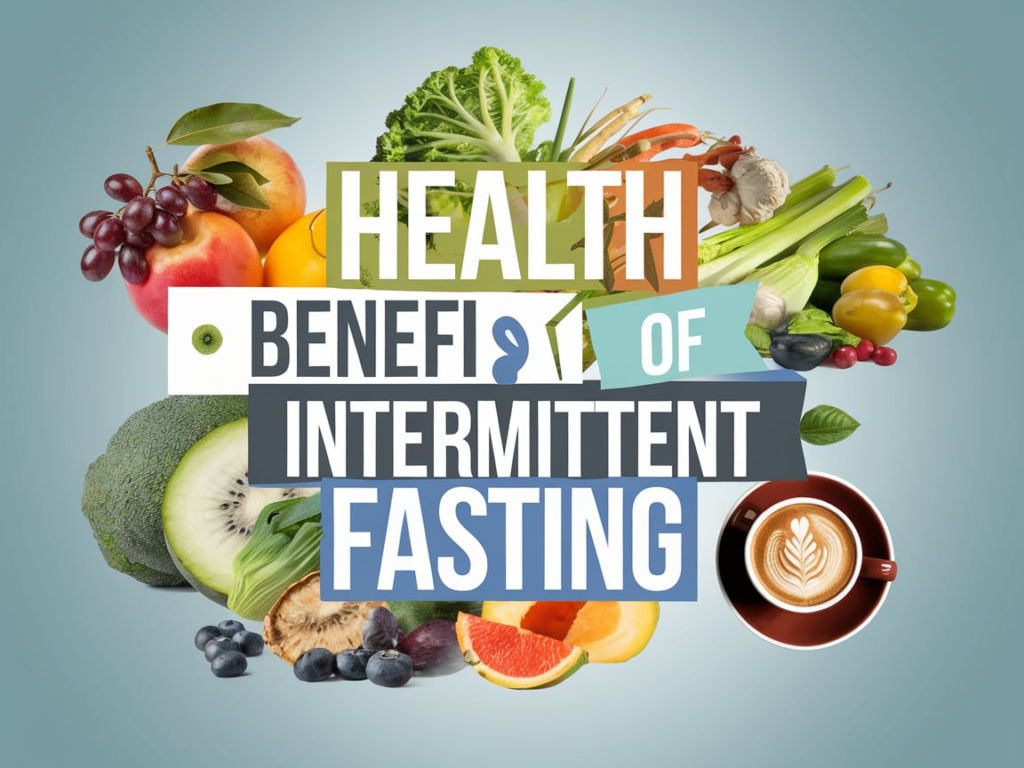
"Unlock the Secrets of Intermittent Fasting: Discover 7 Powerful Benefits to Transform Your Health Today!"
Intermittent fasting (IF) has emerged as one of the most popular health and wellness trends of the 21st century. With its promise of weight loss, improved metabolic health, and numerous other benefits, it has captured the attention of millions worldwide. But what exactly is intermittent fasting, and how can it impact your life? In this comprehensive guide, we will explore the principles of intermittent fasting, its various methods, the science behind its benefits, potential drawbacks, and practical tips for getting started.
What is Intermittent Fasting?

Intermittent fasting is not a diet in the traditional sense; rather, it’s an eating pattern that cycles between periods of fasting and eating. It doesn’t prescribe specific foods to eat but focuses on when you should eat them. This approach is rooted in historical human behaviors, as our ancestors often faced periods of scarcity and had to adapt to irregular eating schedules.
The Basics of Intermittent Fasting
At its core, intermittent fasting can be simplified into two main components:
- Fasting Period: This is the time during which you abstain from consuming calories. Depending on the method, fasting can last anywhere from 12 hours to several days.
- Eating Period: This is the window in which you are allowed to eat. The length of this period also varies depending on the specific intermittent fasting method you choose.
Popular Methods of Intermittent Fasting
There are several approaches to intermittent fasting, each with its unique structure. Here are some of the most popular methods:
1. 16/8 Method
The 16/8 method is one of the simplest and most popular forms of intermittent fasting. It involves fasting for 16 hours and eating during an 8-hour window. For many people, this means skipping breakfast and eating only from noon to 8 PM.
2. 5:2 Diet
The 5:2 diet allows you to eat normally for five days of the week while restricting calorie intake to about 500-600 calories on the remaining two non-consecutive days. This method offers flexibility and can be easier for those who struggle with longer fasting periods.
3. Eat-Stop-Eat
This approach involves a full 24-hour fast once or twice a week. For instance, you might fast from dinner one day to dinner the next. While effective for some, it may be challenging for beginners.
4. Alternate-Day Fasting
As the name suggests, alternate-day fasting alternates between days of regular eating and days of fasting or severely restricted calorie intake. This method may be more difficult to adhere to but can lead to significant health benefits.
5. Warrior Diet
This diet involves eating small amounts of raw fruits and vegetables during the day and consuming one large meal in the evening, typically within a 4-hour window. The focus is on whole foods and nutrient-dense options.
The Science Behind Intermittent Fasting

Understanding the scientific basis for intermittent fasting can help clarify its benefits and mechanisms.
Metabolic Changes
When you fast, several metabolic processes kick in. Insulin levels drop, which facilitates fat burning. Low insulin levels also promote cellular repair processes and can enhance hormone production, which aids in weight loss.
Autophagy
Intermittent fasting stimulates a process called autophagy, where the body cleans out damaged cells and regenerates new ones. This cellular repair mechanism is linked to longevity and the prevention of various diseases.
Inflammation and Health
Research indicates that intermittent fasting may reduce inflammation and lower the risk of chronic diseases. Studies have shown that IF can improve markers associated with conditions such as heart disease, diabetes, and cancer. For more detailed insights, you can check the National Institute on Aging.
Brain Health
Fasting may also benefit brain health. Animal studies suggest that intermittent fasting can increase the production of brain-derived neurotrophic factor (BDNF), a protein that supports neuron growth and resilience against stress and neurodegenerative diseases.
Health Benefits of Intermittent Fasting

The potential benefits of intermittent fasting extend beyond weight loss. Here are some of the most notable health advantages:
1. Weight Loss and Fat Loss
One of the most compelling reasons people try intermittent fasting is for weight loss. By reducing the eating window, many people naturally consume fewer calories, leading to weight loss. Additionally, fasting boosts metabolism and promotes fat burning.
2. Improved Insulin Sensitivity
Intermittent fasting can enhance insulin sensitivity, which is crucial for managing blood sugar levels. Improved insulin sensitivity lowers the risk of type 2 diabetes and helps maintain stable energy levels throughout the day.
3. Heart Health
Studies suggest that intermittent fasting can improve heart health markers, such as cholesterol levels, blood pressure, and inflammation. These improvements contribute to a reduced risk of heart disease. You can explore more about this in Harvard Health Publishing.
4. Enhanced Brain Function
The potential cognitive benefits of intermittent fasting are substantial. It may improve memory, learning, and overall brain function, as well as decrease the risk of neurodegenerative diseases.
5. Longevity
Research in animals indicates that intermittent fasting may extend lifespan. While human studies are still ongoing, the potential for increased longevity is a compelling reason for many to adopt this eating pattern.
Potential Drawbacks of Intermittent Fasting
While intermittent fasting offers numerous benefits, it’s essential to consider potential drawbacks:
1. Hunger and Cravings
Many people experience increased hunger and cravings during fasting periods, which can be challenging to manage. This might lead to overeating during the eating window if not approached mindfully.
2. Social and Lifestyle Constraints
Intermittent fasting may complicate social situations that revolve around food. It can be difficult to adhere to strict eating windows when dining out or attending gatherings.
3. Nutrient Deficiency
If not planned properly, intermittent fasting could lead to inadequate nutrient intake. It’s essential to prioritize nutrient-dense foods during eating periods to avoid deficiencies.
4. Not Suitable for Everyone
Intermittent fasting may not be appropriate for everyone, particularly those with certain medical conditions, pregnant or breastfeeding women, and individuals with a history of eating disorders. Always consult a healthcare professional before making significant dietary changes.
Getting Started with Intermittent Fasting
If you’re interested in trying intermittent fasting, here are some practical tips to ease the transition:
1. Start Slowly
Begin with a less intense fasting schedule, such as the 12/12 method, where you fast for 12 hours and eat for 12 hours. Gradually increase your fasting duration as you become more comfortable.
2. Stay Hydrated
During fasting periods, drink plenty of water, herbal teas, or black coffee to stay hydrated. These can help curb hunger pangs and keep you energized.
3. Focus on Whole Foods
During your eating windows, prioritize whole, nutrient-dense foods such as vegetables, fruits, lean proteins, and healthy fats. Avoid processed foods and excessive sugars.
4. Listen to Your Body
Pay attention to your body’s signals. If you feel dizzy, excessively fatigued, or unwell, reconsider your fasting approach and consult a healthcare professional.
5. Plan Your Meals
Meal prepping can be beneficial to ensure you have healthy, satisfying meals ready to go during your eating window. This minimizes the temptation to reach for unhealthy options.
Conclusion
Intermittent fasting is more than just a trend; it’s a flexible and effective approach to health and wellness that aligns with our natural eating patterns. With its numerous benefits, from weight loss to improved metabolic health and longevity, it’s no wonder that people are increasingly embracing this eating style.
However, as with any significant lifestyle change, it’s crucial to find an approach that works best for you and your individual needs. By understanding the science behind intermittent fasting and implementing practical strategies, you can embark on a journey that not only transforms your relationship with food but also enhances your overall well-being.
For more detailed information on intermittent fasting, consider visiting Healthline and Mayo Clinic.
Whether you choose to try the 16/8 method, the 5:2 diet, or another approach, remember that the goal is to cultivate a sustainable and enjoyable way of eating that promotes health and vitality in the long run. With patience, perseverance, and mindful eating, intermittent fasting may just be the key to unlocking a healthier, happier you.





